It is frustrating to put out a hummingbird feeder only to find it quickly overrun by ants. Not only does it discourage hummingbirds and other nectar-feeding birds from coming to your feeder, but it also encourages more ants to invade.
But how to keep ants out of hummingbird feeder? Is it even possible? Yes, it is. Here are the best ways how to keep ants out that actually work.
1. Install an ant moat
One of the best ways to keep ants out of hummingbird feeders is to install an ant moat. You can either install an ant moat or simply buy one.
Ant moats serve as a barrier for ants, taking their attention away from the nectar inside the feeder. While you could make your own ant moat, you ultimately have two solid options; buy ant moat or buy a feeder with ant moat installed.
Ant moat is simple yet extremely effective way to keep them away from hummingbird feeders.
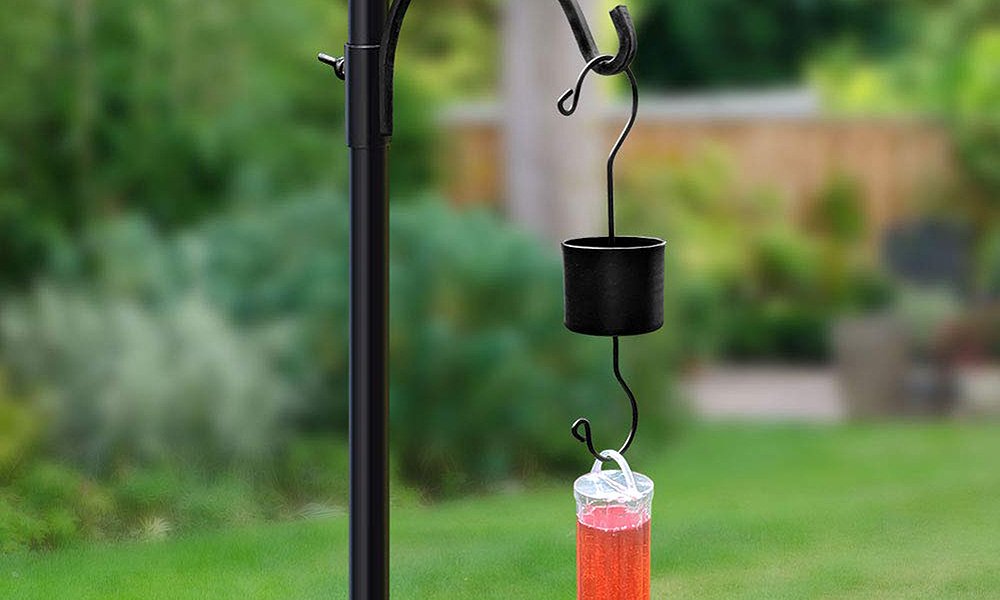
Consider buying a hummingbird feeder that already has a built-in ant moat like the Ultra Hummzinger. If you have a feeder that doesn’t have an ant moat, then you can buy an ant moat that easily attaches to your feeder.
A couple of great examples of would be the Hummers Galore Ant Moat and the Droll Yankees Ant Moat. During the summer season, the water in the ant moat will dry up faster, so refill the ant moat with water when necessary.
2. Find and stop the leakage
If your feeder is leaking with one of your homemade hummingbird recipes, ants will be attracted by the scent of it. Ants are basically magnets to all sweet sources of food.
This seems to be the most common reason why hummingbird feeders become ant feeders. Check your feeder for any slits or leakages and stop them right away. Make sure that if there are any loose parts on your feeder, tighten up all those parts.
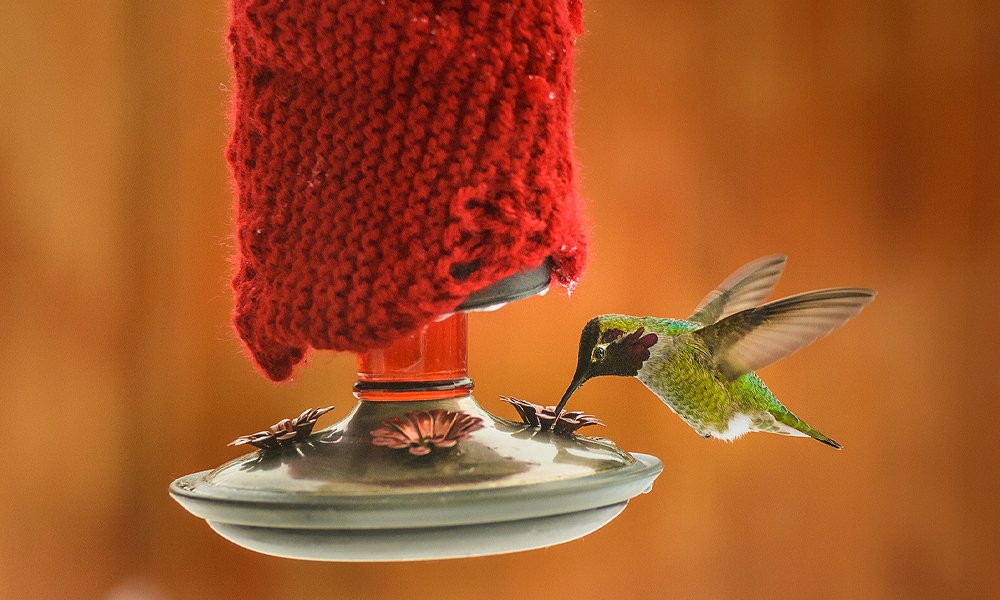
Once they are attracted to the dripping sweet water, the ants will invade your feeder. Hot weather often causes the nectar to expand and drip, which explains why small leaks occur.
Windy weather can also lead to leaks. Older feeders tend to leak more as the weather takes its toll on the feeders. If your feeder is dirty, then clean it often. If your feeder is broken beyond preparation, then buy a hummingbird feeder with a proper ant moat.
3. Hang the feeder on fishing line
This method is recommended if you happen to live in a climate where ant moat is not suitable. Ants have a hard time gripping a thin and slippery fishing line and will be hindered in reaching the hummingbird feeder. Most fishing lines tend to be very slippery in texture.
Hanging the hummingbird feeder from a fishing line will make it harder for ants to get access to the nectar. Make sure that the fishing line you get for your feeder is strong enough to hold the feeder securely.
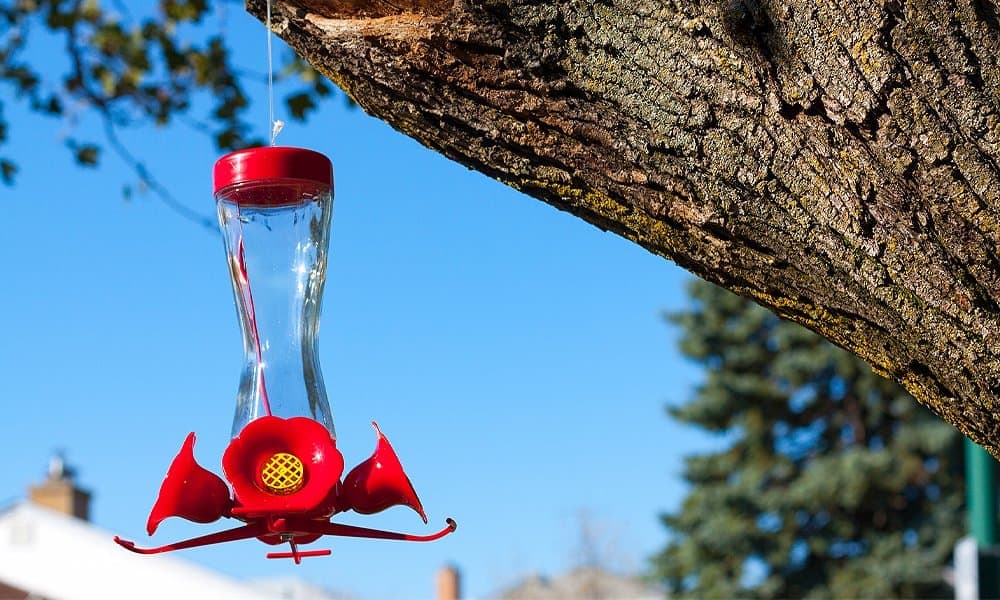
The fishing line by itself is enough of a deterrent for ants. Fishing lines are too thin for ants to attempt a balancing act successfully. Don’t to smear materials such as vegetable oil, petroleum jelly, or any sticky substance on the fishing line.
Hummingbirds may brush up against the hanger and can gum up their feathers with these sticky substances on their wings, preventing them from flying.
4. Place the feeder over water
No matter how strange or irrelevant it may sound, the positioning of your feeder is a top priority. If you have a fountain or a general body of water in your yard, then you should hang your feeder over that.
This will prevent ants from crawling towards the feeder as ants will stay out of the water. Although this won’t completely keep them away, hanging your feeder over a body of water will discourage ants because they can’t stand the feeling of water.

Ants are not the best swimmers. One brilliant way to place your hummingbird feeder over a body of water would be to use a clamp pole design.
One example of a sturdy clamp pole design would be the Gray Bunny Heavy Duty Deck Hook. This clamp pole weighs 3.3 pounds, so even if you decide to use larger sized hummingbird feeders for your yard, this design can remain sturdy.
5. Try adhesive tape
An effective and aggressive way to keep ants away from hummingbird feeders, you can apply some adhesive tape that is exposed to ants stepping onto it.
Make sure the tape is applied with its gum side on the outer side, around the wire or pole that your feeder is hanging on. Ants will soon get stuck on the gum and won’t be able to reach the feeding ports of the feeders at all.
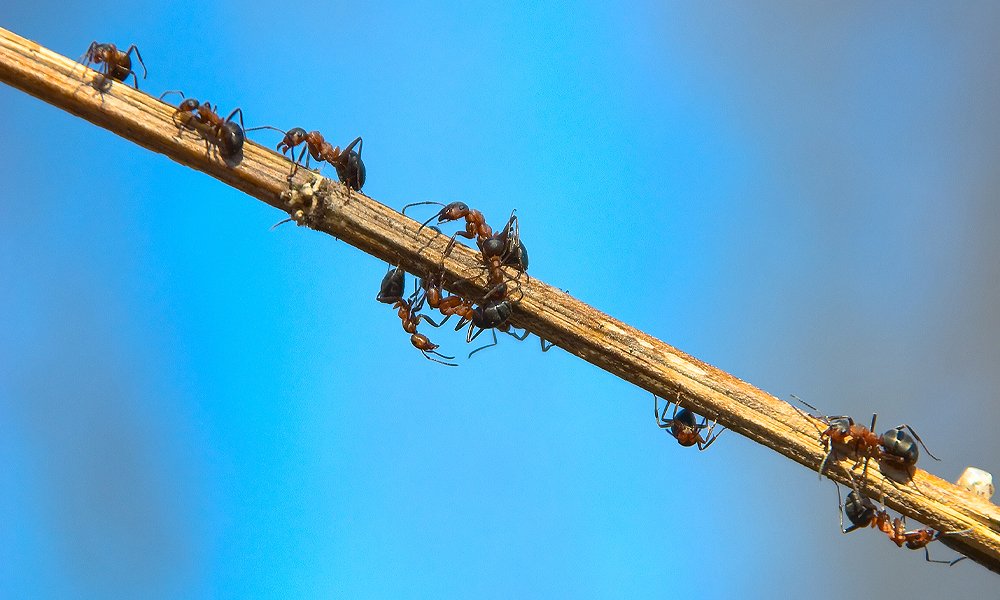
The main drawback of this method is that you will constantly have to be replacing the adhesive tape throughout the course of a hot summer. The adhesive and the scent properties of tape will usually wear off after a few sunny days.
Ants might not be deterred all that much by adhesive tape because of their exoskeletons being made of chitin, a slick and oily substance made of cellulose polymers. Always buy the strongest brands of adhesive tape.
6. Consider a shaded location
The best place to position a hummingbird feeder is in an area that has partial shade. If the area is too dark, the hummingbirds may have trouble locating it, so the area must be exposed to some light.
If an area receives too much sunlight, any feeder in it will have its nectar heat up too much, making it unappealing to hummingbirds. Hot weather will expand the feeder if it is made of plastic and this expansion can result in leakages.
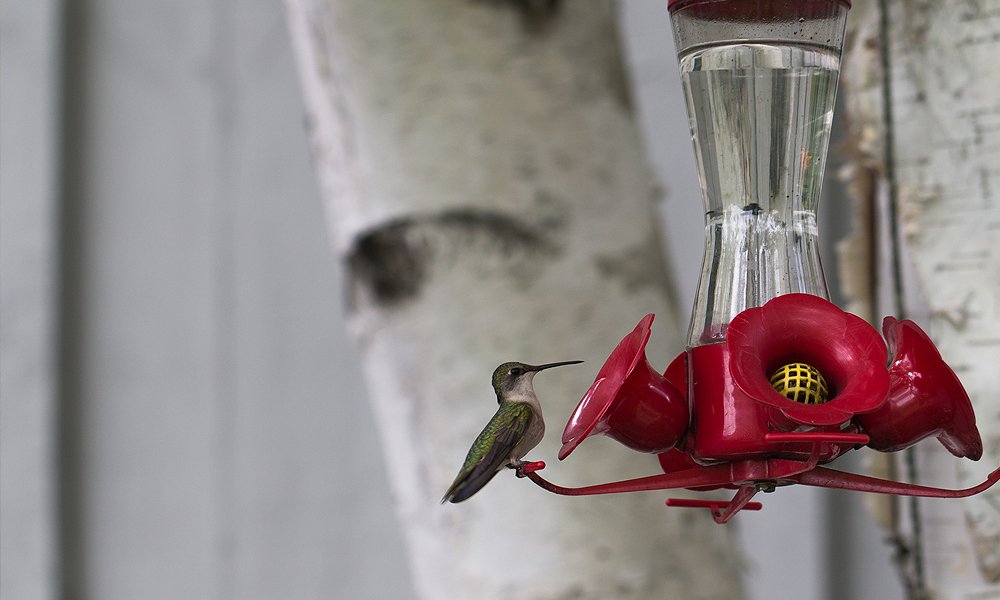
There are ways to find out what would make an ideal area for partial shade. The main thing to consider is visibility. If more than half of your feeder is covered by an object like a bush, tree, or decorative pillar, then it won’t be visible enough for hummingbirds to see it.
If you have objects that cover your feeder, make sure they don’t overtake the space hummingbirds need to consume the nectar. This is also a good idea to keep bees out of hummingbird feeders.
7. Make it slippery
Applying some Vaseline or some oily liquids (some even use petroleum jelly) on the outer side of your feeder would work wonderfully against ants.
This will act as a deterrent for ants in reaching the feeder. If you don’t have Vaseline, you can use Vicks VapoRub as a substitute.
The idea behind this method is that the ants don’t like to walk across a sticky surface. It has also been reported that they don’t like the smell of Vicks, and it will act as a repellent. That’s also the reason why the ant moat is so effective.
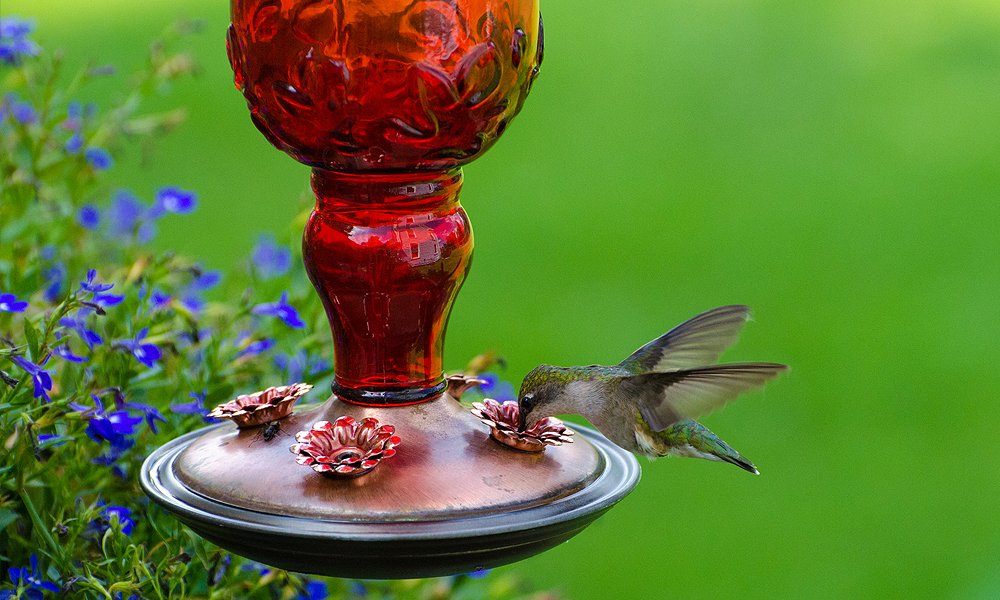
Specifically spread the Vaseline on whatever the feeder is hanging from. There are issues to address when applying this method. If a hummingbird accidentally touches the Vaseline or the oily liquid, it might get in trouble as its wings will get sticky and hard to control while flying.
Therefore it is not recommended to grease the entire feeder, but only the parts that are hardly reachable for hummingbirds and impossibly reachable for ants.
8. Move the feeder around often
Sometimes it is as simple as moving the feeder to a different location that will solve your ant problem. You don’t have to move it far, but to try a different spot and you may be pleasantly surprised with fewer ants.
Once ants find a fantastic food source, such as a hummingbird feeder, they will leave behind a scent trail to make it easy for the rest of the ant colony to locate.
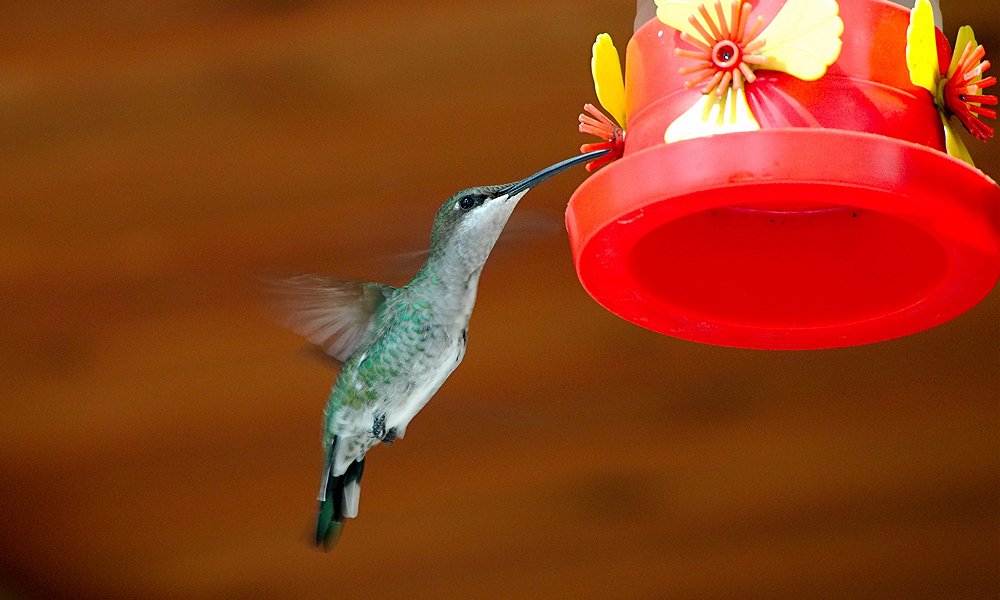
Fortunately hummingbirds symbolize adaptibility. While you want to move the feeder at times, moving it too much can throw off the hummingbirds that have grown used to feeding at a particular location, that’s one of the way to keep ants away.
Make sure that you have several suitable spots in your yard that you can use to throw ants off course. Before moving your feeder, adjust your setup to prevent a recurrence of the ant problem. Have a regular schedule for times when to move your hummingbird feeder.
To make your life easier, combine an ant moat with moving the feeder.
9. Clean the feeder on a daily basis
Regularly cleaning a hummingbird feeder isn’t an uphill task since the shapes of feeders are quite easy to clean. Keeping your feeder clean on a regular basis will provide hummingbirds protection against ant invasions. At most, the cleaning process only takes 30 seconds of your time.
Your feeder needs to be cleaned on a daily basis. It isn’t just about preventing ants from infesting hummingbird feeders, but it is also about keeping the hygiene at a normal level for the wild animals you care about.
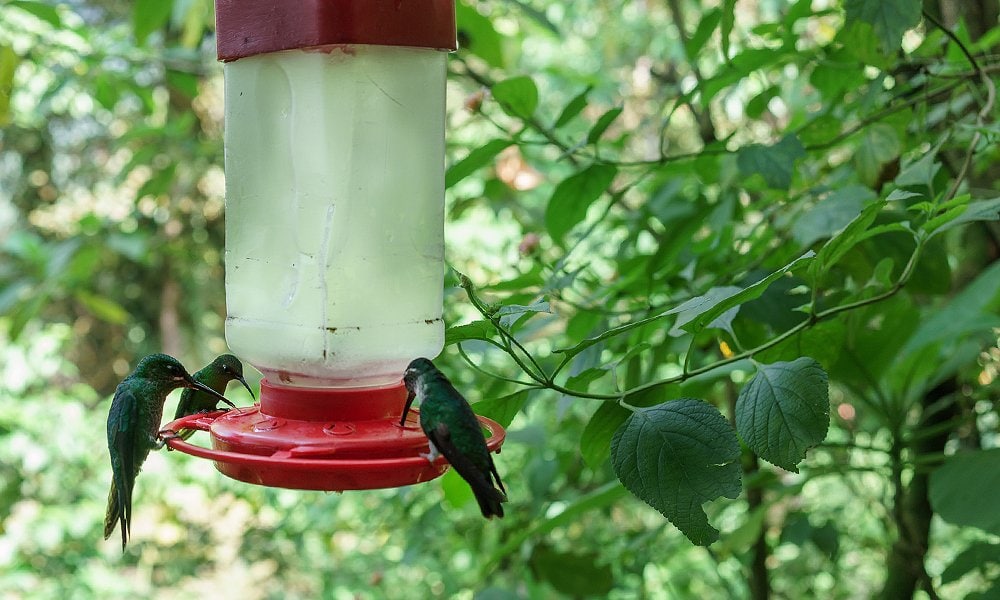
You have to be constantly checking on your feeder to verify that it isn’t leaking. If you start to notice ants congregating on the ground below your hummingbird feeder, then you most likely have a leak.
Every time you check your feeder to refill it, clean it inside and out, getting any residue off, especially on the outside so that it won’t attract the ants.
10. Try bay leaves
Serving as an excellent repellent to ants, bay leaves can also be used to save your feeders. If you have used a pole to hang a feeder, then tie some bay leaves or mint leaves around the pole and also around the wire on which the feeder hangs.
This covering will prove to be effective in keeping ants away from your feeder. The scent of bay leaves is the determining factor in driving ants and other insects crazy as it gives off a pungent smell.
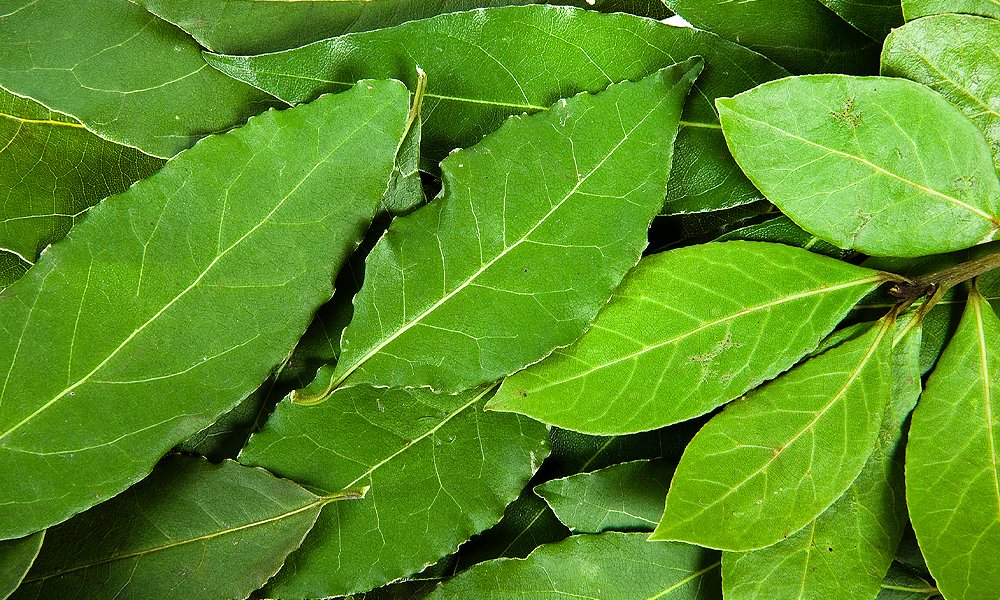
It is possible that a couple of essential oils that are commonly extracted from bay leaves, mycrene, and eugenol, may play a role in deterring pests like ants.
If you want to create a barrier of sorts on the ground below your hummingbird feeder by placing whole bay leaves down in a circle, this will also repel ants even if your feeder has a small leak.
11. Test insecticide sprays
Spray the ground around the base of the feeder with neem oil spray or place insecticide granules around the base. Keep the insecticide low to the ground to avoid harming the birds.
If the hummingbird feeder is hung on a tree in the courtyard of your house, then the trunk of the tree should be sprayed with some insect killer spray from time to time. This is a really effective and aggressive way to prevent ants and other insects from reaching your hummingbird feeder.
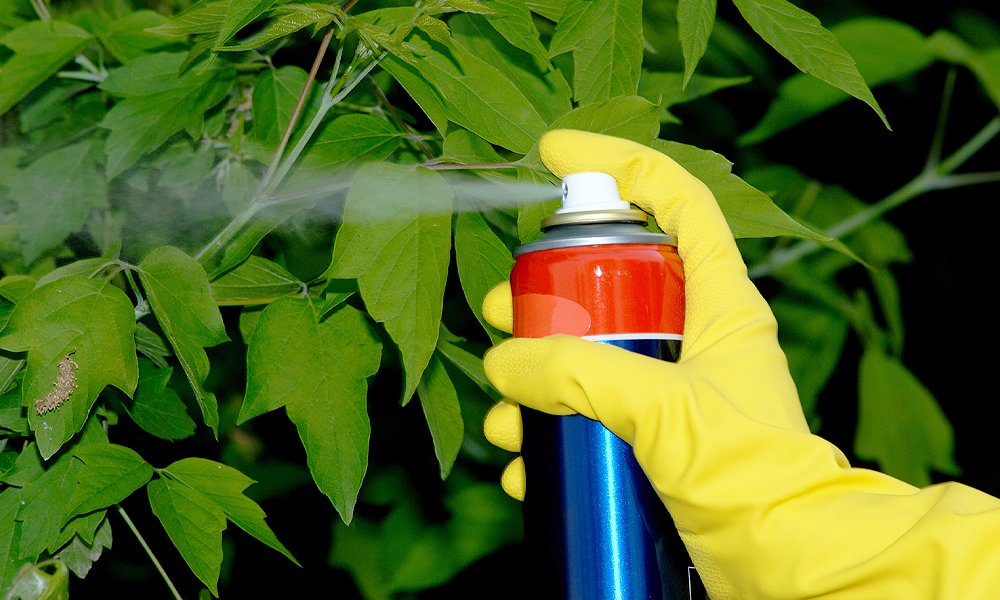
The recurring problem with this method is that many insecticide sprays are simply too dangerous to handle as they will negatively affect the health of not only insects, but birds and other animals, and ultimately humans.
One good example of a safe insecticide spray to use would be the MDX Concepts Organic Home Pest Control Spray. This spray is all-natural and is safe to have around children and pets.
12. Use household ingredients to repel ants
If using ant moat and petroleum jelly didn’t to the job, then you can try out some household items to keep ants away from hummingbird feeders.
It is best to avoid using commercial ant repellents, so if you resort to using household ingredients to repel ants, make sure they are safe to use. Cayenne pepper, lemon water, and vinegar are great examples of safe ingredients.
You can either spray these in the area to repel ants away from your feeder, or you can try a unique natural any repellent spray recipe that only requires two essential oils. Clove bud essential oil and peppermint essential oil are the two oils.
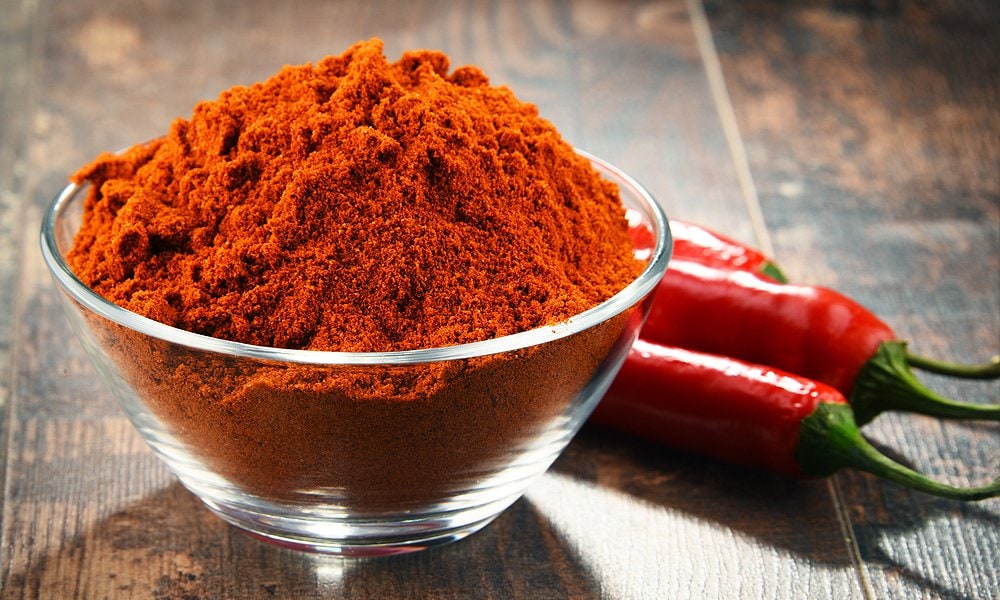
Clove essential oil proved to be effective against ants as it revealed a 100% ant mortality rate within 6 hours in a test. Well known for being cooling and stimulating medicinal herb, peppermint essential oil is also great for getting rid of ants.
One key ingredient in this oil called menthol has biocidal properties and is effective in controlling pests. When used properly, these oils are considered to be safe.
Related: 12 Tips on How to Attract Hummingbirds to Your Yard (2022)

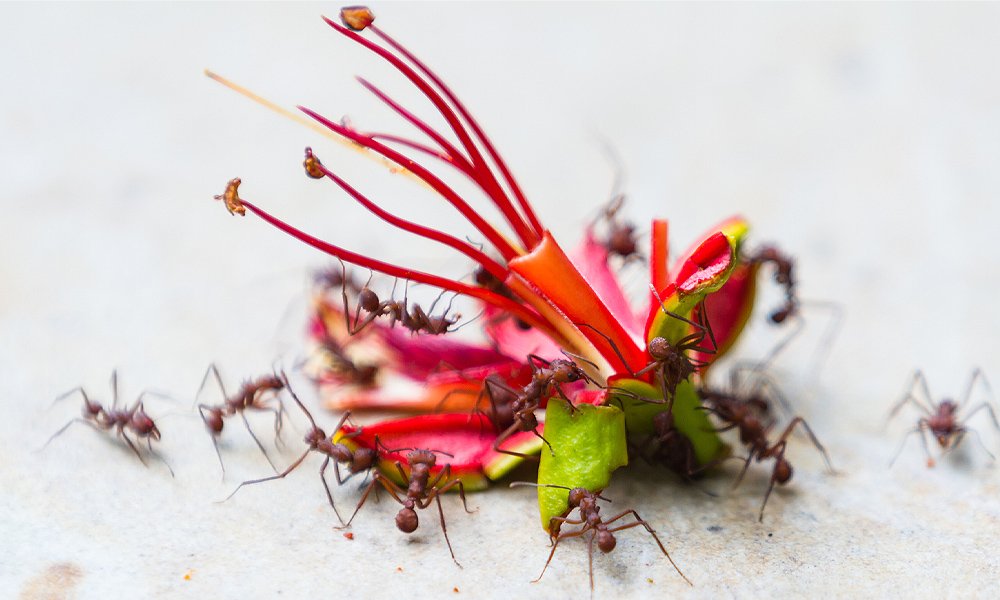
Wrap dryer sheets around the pole or hook that the ants are coming down. It has worked for my feeders for years to control ants.
I tried the monofilament line..did not work. I have in the past tried vasoline and it was okay but had to reapply often. Used mint leaves and it didn’t work. Moving around works for short periods. Water may be my answer.
Please reconsider some of your suggestions. Evidence shows that use of insectiside and especially vasaline is very bad for the hummingbirds. Hummingbirds eat insects. 80% of thier diet is soft bodied insects so posioning these is harmful. also the vasaline or other jellies can get on their wings if they brush the pole and is nearly impossible for them to clean off